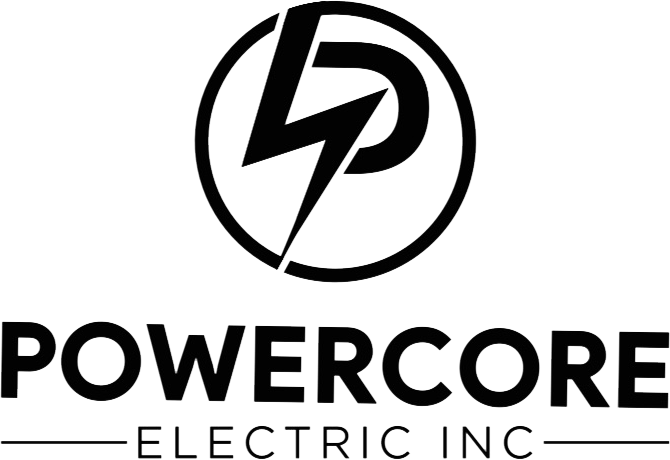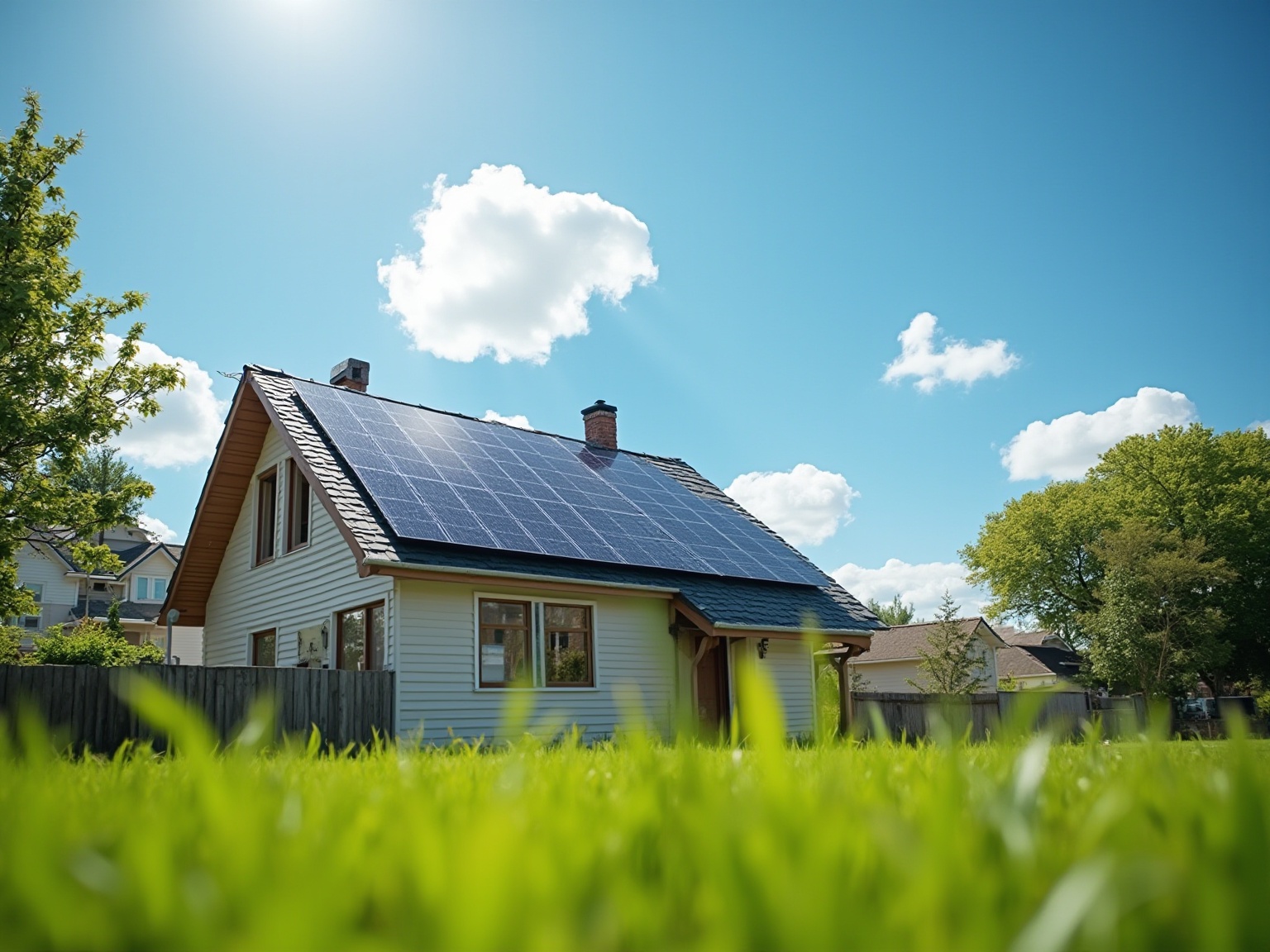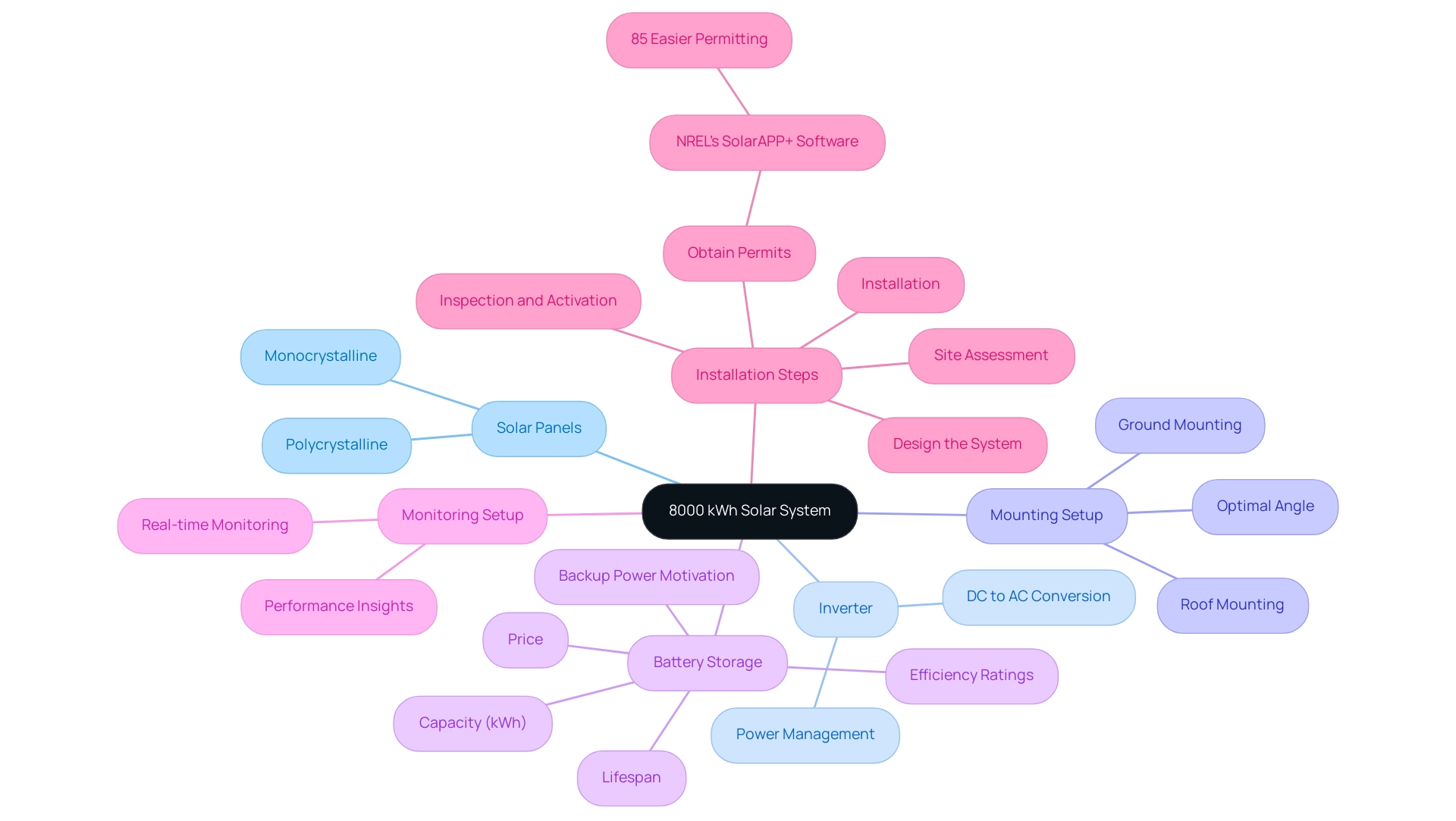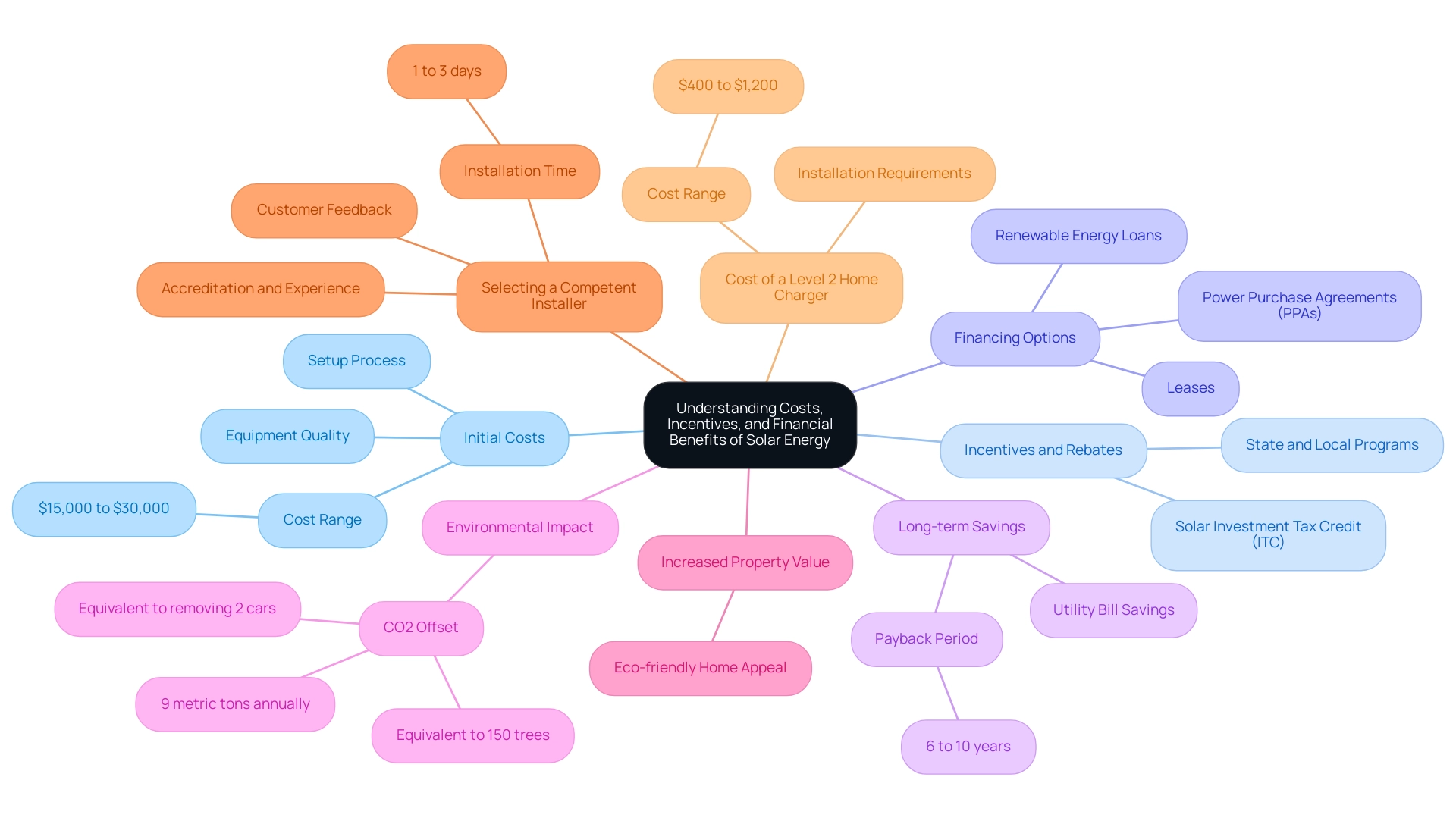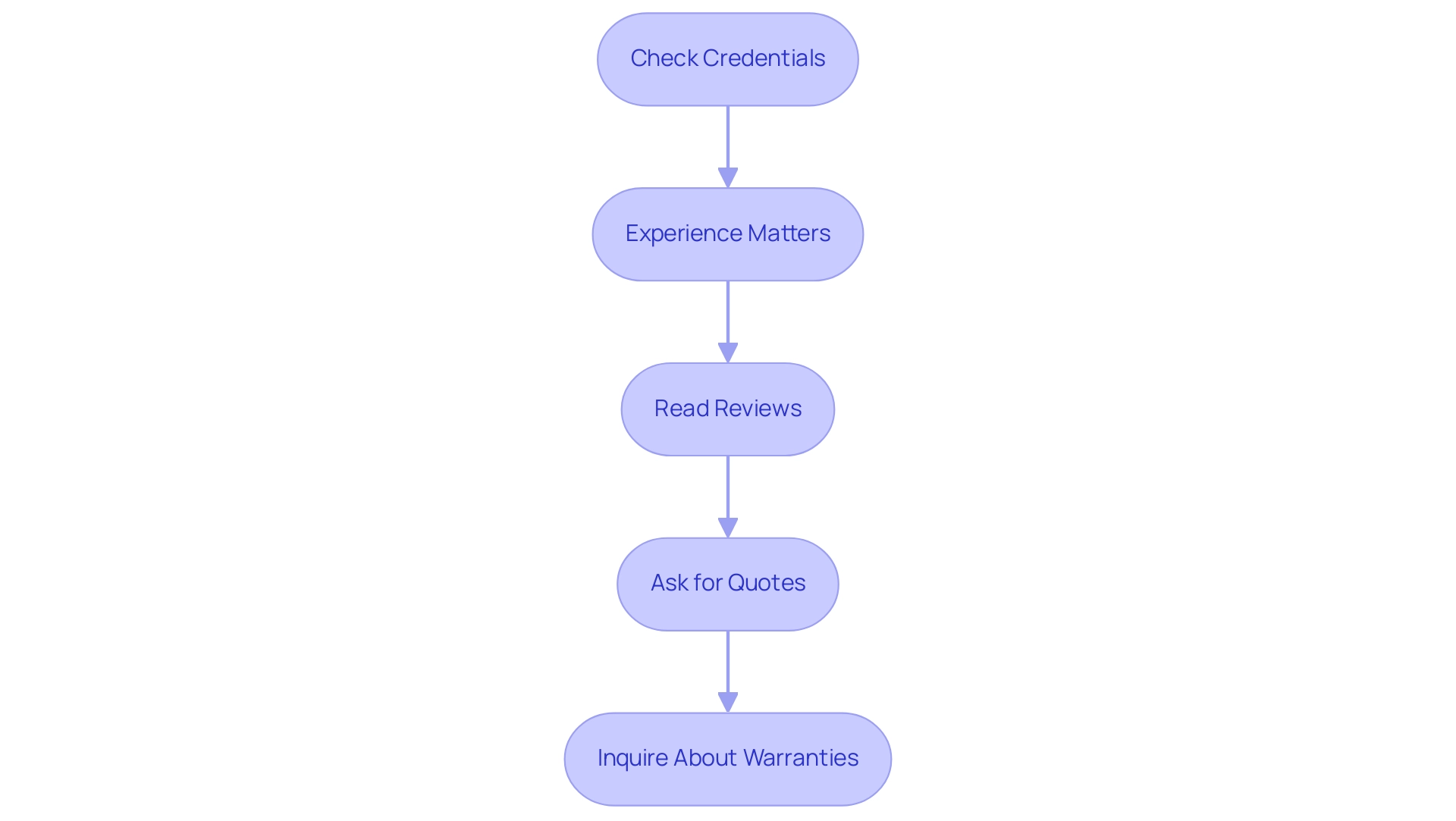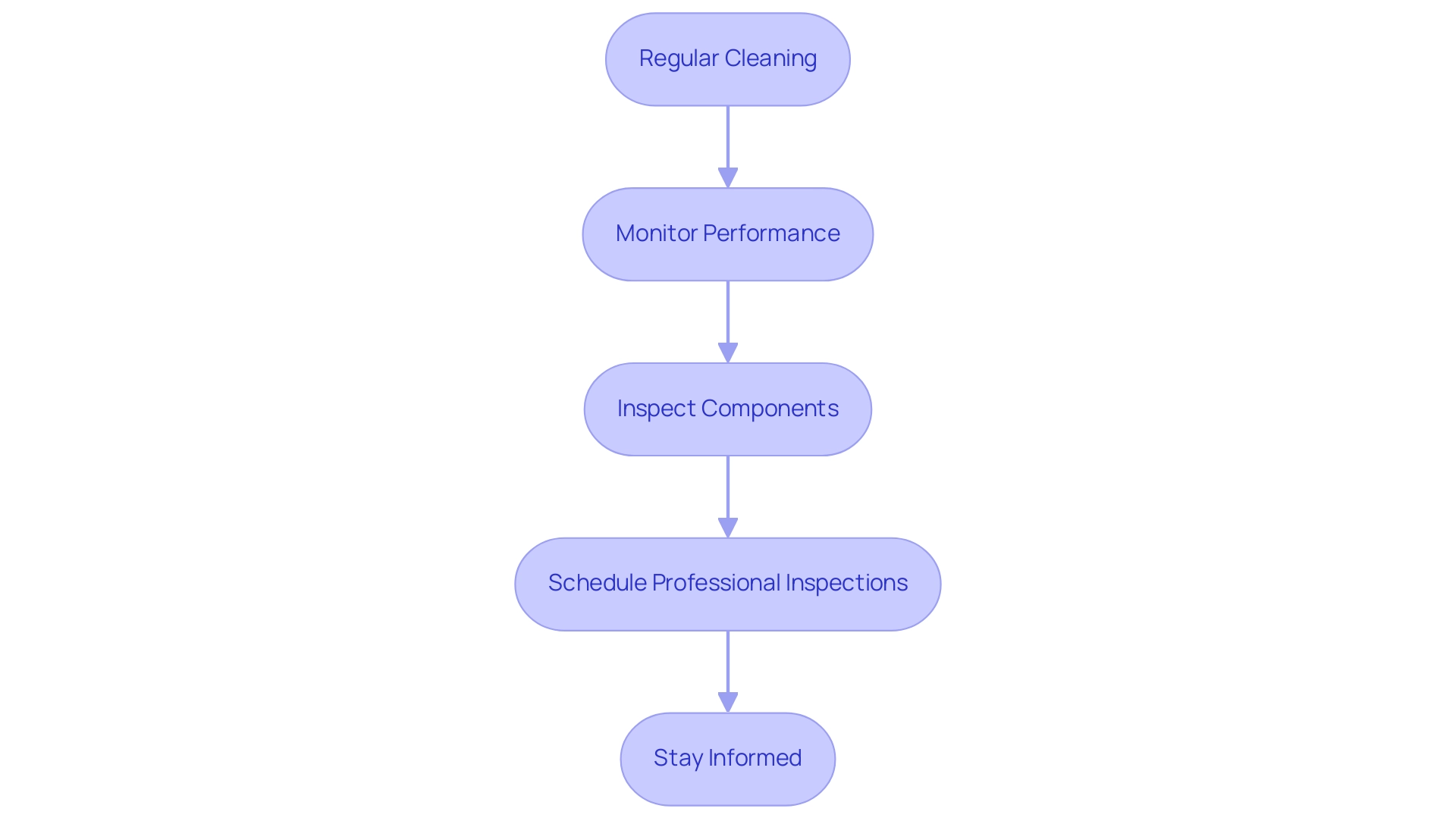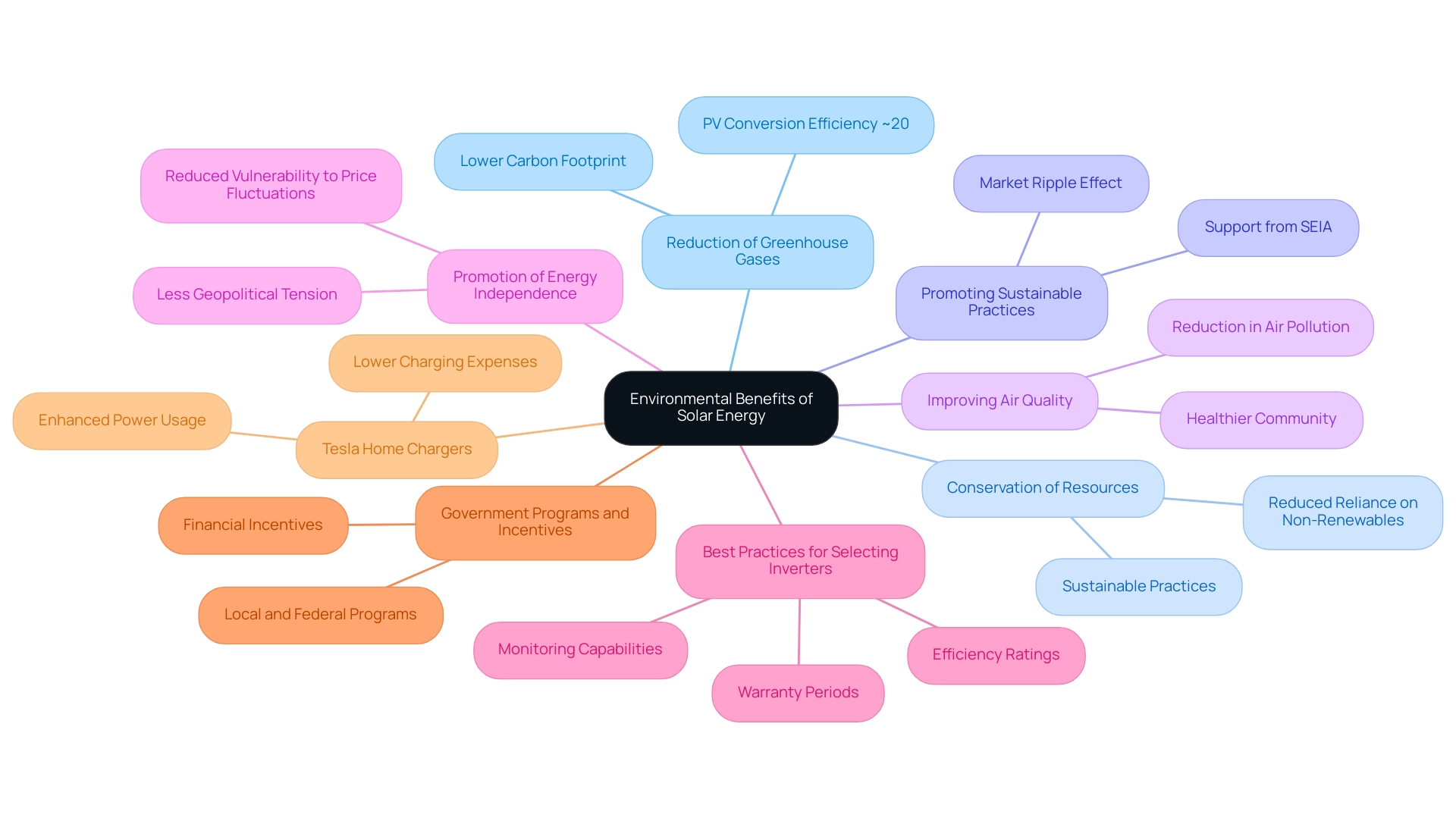Overview
The article focuses on the installation and benefits of an 8000 kWh solar system, detailing essential components, installation steps, financial considerations, and environmental impacts. It emphasizes that understanding the system’s parts, such as solar panels and inverters, along with financial incentives and long-term savings, can empower homeowners to make informed decisions towards a sustainable energy future.
Introduction
In the quest for sustainable living, solar energy stands out as a beacon of hope for homeowners looking to reduce their carbon footprint and save on energy costs. As the world increasingly shifts towards renewable energy sources, understanding the ins and outs of installing an 8000 kWh solar system becomes essential.
From selecting the right components—like solar panels and inverters—to navigating the financial landscape filled with incentives and rebates, each step is crucial in making an informed decision.
Moreover, choosing a qualified installer and maintaining the system post-installation ensures that the investment continues to pay off for years to come.
This guide will walk through the key elements of solar energy, empowering homeowners to embrace this clean energy solution confidently and effectively.
Key Components and Installation Steps for Your 8000 kWh Solar System
Installing an 8000 kWh solar system can seem daunting, but understanding its key components makes the process much more manageable. Here’s what you need to know:
- Solar Panels: These are the heart of your system. You’ll typically choose between monocrystalline and polycrystalline panels, depending on their efficiency and the space available on your property.
- Inverter: This crucial device converts the DC electricity generated by your solar panels into AC electricity, which powers your home. It plays a vital role in ensuring that the power generated is usable for household appliances.
- Mounting setup: A secure mounting setup is vital. It ensures that your panels are properly attached to your roof or the ground and optimally angled for maximum sunlight exposure.
- Battery Storage (optional): If you want to store surplus power for those cloudy days or nighttime use, consider adding a battery system. Many homeowners are now prioritizing backup power for resilience, as seen in recent trends. In fact, a recent case study showed that homeowners primarily installed batteries for backup power rather than financial savings, highlighting a shift in consumer motivation towards ensuring power security. Key features to consider in photovoltaic batteries include capacity (measured in kWh), efficiency ratings, lifespan, and price. Economic benefits can include reduced reliance on grid power and potential savings on electricity bills.
- Monitoring Setup: A monitoring setup enables you to monitor your solar power generation in real-time, providing you insights into how your setup is functioning.
Installation Steps:
- Site Assessment: Begin with a comprehensive evaluation of your home’s roof or ground area to ensure it can support the setup you desire.
- Design the System: Collaborate with an expert to customize the system design to your specific requirements. This step is crucial for optimizing performance in your 8000 kWh solar system, ensuring that the inverter and battery are appropriately sized for your energy consumption.
- Obtain Permits: Navigate the permitting process to secure necessary approvals from local authorities. Notably, 85% of installers using NREL’s SolarAPP+ permitting software report that it makes this process significantly easier, underscoring the importance of this step for compliance with regulations.
- Installation: Leave the actual installation to the professionals. They will handle the mounting of the panels, wiring, and connecting the inverter, ensuring that all components work together efficiently.
- Inspection and Activation: Once everything is installed, your system will undergo an inspection to ensure compliance before it’s activated for your use.
By familiarizing yourself with these components and steps, you’ll feel more confident as you embark on your energy journey, paving the way for a smooth transition to renewable sources. As Ben Zientara, a Policy Analyst for renewable energy, notes in the 2024 report, “the data from our survey about installer-preferred brands and new data about stateside manufacturing capacity reflects the evolving landscape of installations.” With the renewable energy sector anticipated to experience substantial expansion, now is the ideal moment to invest in a sustainable future.
Understanding Costs, Incentives, and Financial Benefits of Solar Energy
When diving into the financial side of your 8000 kWh solar system, it’s helpful to break things down into several key components:
- Initial Costs: Typically, the average cost for installing an 8000 kWh solar system falls between $15,000 and $30,000. This range largely relies on the quality of the equipment you select and the setup process.
- Incentives and Rebates: If you’re in California, there are fantastic incentives available! One major benefit is the Solar Investment Tax Credit (ITC), which permits you to deduct a significant percentage of your energy system costs from your federal taxes, making the transition to renewable energy even more financially appealing. Additionally, various state and local programs may provide further rebates and incentives for renewable energy installations.
- Financing Options: Don’t let upfront costs deter you! Consider financial solutions such as renewable energy loans, leases, and Power Purchase Agreements (PPAs). These options can significantly reduce your initial expenses and help you spread payments over time, making solar more accessible.
- Long-term Savings: Homeowners often discover they can save quite a bit on utility bills. In reality, many recoup their installation expenses within 6 to 10 years, depending on power costs and how effectively the setup operates. This represents a significant financial benefit that can contribute to a more sustainable lifestyle.
- Environmental Impact: An 8kW photovoltaic system can offset about 9 metric tons of CO2 annually, which is equivalent to planting around 150 trees or removing 2 cars from the road each year. This statistic emphasizes the substantial environmental advantages of renewable energy, appealing to eco-conscious homeowners.
- Increased Property Value: Investing in an 8000 kWh solar system not only benefits your wallet but can also enhance the value of your home. An eco-friendly home is a big draw for many buyers today, especially those who are environmentally conscious.
- Selecting a Competent Installer: As Tara Farmer observes, “Putting up photovoltaic panels requires 1 to 3 days on average for the actual setup, depending on the scale, intricacy, and weather conditions.” Choosing a skilled panel installer is essential for guaranteeing a successful setup and enhancing system efficiency. Homeowners should compare multiple quotes and check for accreditation and customer feedback.
- Cost of a Level 2 Home Charger: If you are considering integrating electric vehicle (EV) charging solutions, a Level 2 home charger typically costs between $400 and $1,200, depending on the model and installation requirements. This expense is a significant element to evaluate when shifting to renewable power, as it can improve your power efficiency and sustainability initiatives.
By understanding these financial elements, you can genuinely value the long-term advantages of switching to renewable power. This journey not only leads to significant savings but also a more sustainable lifestyle, all while contributing positively to the environment. Additionally, consider the integration of electric vehicle (EV) charging solutions, such as Tesla home chargers, which can further enhance your energy efficiency and sustainability efforts.
Selecting the Right Solar Installer
When it comes to selecting the right installer for renewable energy, taking the time to choose wisely can make all the difference. Here are some essential tips to guide you through the process, especially as you consider tailored solar solutions from trusted providers like Powercore Electric, serving both Northern and Southern California:
- Check Credentials: It’s crucial to ensure that your installer is licensed, insured, and in good standing with local regulatory bodies. This not only protects you but also assures quality workmanship.
- Experience Matters: Seek out installers with a strong track record in residential solar projects, particularly those who comprehend the unique needs of your area. Powercore Electric’s local knowledge can result in improved setup outcomes, whether you’re in a tech hub or a sun-soaked city.
- Read Reviews: Dive into online reviews and testimonials from previous clients. For example, one pleased client remarked, “Powercore Electric changed my home with their efficient setup process and exceptional customer service!” This feedback can provide valuable insights into customer satisfaction and the quality of work delivered.
- Ask for Quotes: Don’t settle for the first quote you receive. Gather several quotes to evaluate pricing, equipment choices, and setup timelines. Be cautious of significantly lower bids; they might suggest inferior materials or workmanship.
- Inquire About Warranties: A reliable installer should provide warranties on both the equipment and the setup itself. This gives you peace of mind, knowing your investment is protected over the long haul.
As the renewable energy sector continues to expand, with energy jobs rising in 47 states in 2023, the need for skilled installers has never been greater. By carefully selecting a reputable installer like Powercore Electric, who offers comprehensive installation processes and ongoing customer support, you can ensure that your energy system is installed correctly and efficiently. This not only maximizes energy production but also enhances your savings.
Remember, the right choice today sets the stage for a brighter, greener tomorrow. As mentioned by the U.S. Department of Labor, the ApprenticeshipUSA initiative offers hands-on experience for aspiring installers, creating a direct pipeline of skilled workers for the industry. Additionally, the renewable energy sector anticipates stability with about 3% growth each year from 2024 to 2029, despite challenges; thus, choosing a qualified installer is crucial in a changing market.
Maintenance and Monitoring of Your Solar System
To maintain your energy setup in excellent condition and functioning at its best, consider these helpful maintenance tips:
-
Regular Cleaning: Just like your windows, your solar panels need a little TLC. Dust, leaves, and debris can accumulate and obstruct sunlight, significantly diminishing your setup’s efficiency and energy output. Tailoring your cleaning schedule to environmental factors—such as pollen season or after heavy storms—ensures optimal performance. Use water and a soft brush to give your panels a gentle clean, or hire a professional service if that’s more your style. As emphasized by specialists, regular upkeep can assist in reducing the median loss rate of 0.75% annually observed in photovoltaic installations. Always remember, as the experts at Erickson Electric Company say,
When it comes to cleaning solar panels, employing the right techniques is crucial to avoid damaging the delicate surfaces.
Additionally, consider exploring innovative cleaning solutions that can enhance efficiency and simplify the process.
-
Monitor Performance: Keep an eye on how much energy your setup is generating! Utilizing intelligent monitoring solutions can help you track production and instantly identify any declines in performance. This proactive approach can help catch issues early, saving you time and hassle down the line. Be aware that environmental factors, such as dust accumulation and temperature fluctuations, can impact performance, so stay vigilant.
-
Inspect Components: Take a stroll around your setup every now and then. Examine the inverter, batteries (if you possess them), and mounting arrangement for any indications of wear or damage. Be cautious, as squirrels may gnaw on wiring, causing damage that impacts panel performance. A little vigilance goes a long way!
-
Schedule Professional Inspections: Think of this as a yearly check-up for your energy system. Having a qualified technician inspect your setup annually can catch potential problems before they escalate, ensuring everything runs smoothly and efficiently. Look into any government programs that may assist with these inspections or provide incentives for maintaining your energy system.
-
Stay Informed: Make sure you’re in the loop regarding any manufacturer recalls or updates for your energy equipment. Remaining knowledgeable assists you in adhering to warranty stipulations and ensures your system remains secure and efficient.
By integrating these upkeep methods into your schedule, you’ll not only prolong the lifespan of your system but also keep enjoying the financial advantages of utilizing renewable resources. Plus, keeping your panels clean and monitored means more green for you and the planet!
Environmental Benefits of Solar Energy
Opting for renewable power provides numerous environmental benefits that every eco-aware homeowner should evaluate:
- Reduction of Greenhouse Gases: Solar power generation is a clean process that emits no greenhouse gases, allowing you to significantly lower your carbon footprint compared to traditional fossil fuel sources. The transition to renewable power can play a vital part in reaching net-zero carbon dioxide emissions by the early 2000s. As technology advances, commercial photovoltaic panels are achieving a PV conversion efficiency of approximately 20%, showcasing the effectiveness of this renewable technology.
- Conservation of Resources: By utilizing sunlight, you reduce your reliance on non-renewable power sources, aiding in the preservation of valuable natural resources. This not only benefits the environment but also encourages sustainable practices that can lead to long-term ecological balance.
- Promoting Sustainable Practices: Supporting sunlight power generates a ripple effect in the market for renewable technologies. Increased demand fuels innovation and drives the development of even more sustainable solutions. Support from groups such as the Solar Energy Industries Association (SEIA) highlights the significance of thorough climate and power legislation for the development of renewable resources.
- Improving Air Quality: Shifting to renewable energy significantly reduces air pollution, resulting in cleaner air and a healthier environment for your community. This improvement is vital, as cleaner air contributes to better health outcomes for all residents, enhancing overall quality of life.
- Promotion of Energy Independence: Embracing renewable energy enhances national energy independence, reducing our vulnerability to fluctuations in fossil fuel prices and geopolitical tensions.
- Best Practices for Selecting Photovoltaic Panel Inverters: When selecting a photovoltaic panel inverter, consider factors such as efficiency ratings, warranty periods, and compatibility with your energy setup. Opting for inverters with advanced features like monitoring capabilities can enhance your system’s performance.
- Government Programs and Incentives: Homeowners can benefit from various government programs that offer financial incentives for photovoltaic installations. Investigate local and federal programs to maximize your savings and support for renewable energy.
- Tesla Home Chargers: If you are contemplating electric vehicles, incorporating a Tesla home charger with your renewable energy setup can enhance power usage and lower charging expenses, making your residence even more sustainable.
Furthermore, while evaluating the advantages of renewable energy installations, it’s crucial to recognize the geographic concentration of photovoltaic production, especially in China, where dependence on coal power can elevate the GHG emissions linked to manufacturing. By recognizing these environmental benefits, homeowners can feel empowered to invest in an 8000 kwh solar system that meets their energy needs while also supporting a sustainable future for the planet.
Conclusion
Embracing solar energy by installing an 8000 kWh system is a significant step towards a sustainable future, offering both environmental and financial benefits. Understanding the key components—like solar panels, inverters, and battery storage—along with the essential installation steps ensures that homeowners can navigate the process with confidence. By selecting a qualified installer and maintaining the system, the investment can yield long-term rewards.
Financially, the incentives and rebates available, such as the Solar Investment Tax Credit, make the transition to solar more accessible. Homeowners can expect to see substantial savings on their energy bills, often recouping their initial investment within a few years. Moreover, the positive impact on property value and the environment, including reduced carbon emissions, further reinforces the case for solar energy.
Lastly, regular maintenance and monitoring of the solar system not only protect the investment but also enhance its efficiency. By staying informed and proactive, homeowners can ensure their systems operate at peak performance, benefiting both their wallets and the planet. The journey to solar energy is not just about energy independence; it’s about fostering a healthier environment for future generations. Embracing this clean energy solution today paves the way for a brighter, greener tomorrow.
